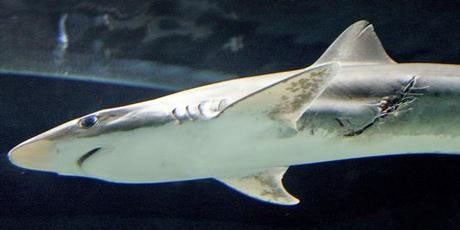Sharp-toothed shark acts as midwife

Your support helps us to tell the story
From reproductive rights to climate change to Big Tech, The Independent is on the ground when the story is developing. Whether it's investigating the financials of Elon Musk's pro-Trump PAC or producing our latest documentary, 'The A Word', which shines a light on the American women fighting for reproductive rights, we know how important it is to parse out the facts from the messaging.
At such a critical moment in US history, we need reporters on the ground. Your donation allows us to keep sending journalists to speak to both sides of the story.
The Independent is trusted by Americans across the entire political spectrum. And unlike many other quality news outlets, we choose not to lock Americans out of our reporting and analysis with paywalls. We believe quality journalism should be available to everyone, paid for by those who can afford it.
Your support makes all the difference.Visitors to a New Zealand acquatic centre were stunned to see one shark give another shark an impromptu caesarean section.
Staff at Kelly Tarlton's Underwater World in Auckland were initially dubious when visitors came running to tell them there were baby sharks spilling from a wound in a female school shark's stomach - courtesy of a large bite by another shark.
But they found a female with a large gaping stomach wound and four babies swimming in the tank.
Kelly Tarlton's aquarist Fiona Davies said it was common for sharks to take chunks out of each other, even in the wild, but she had never heard of anything like this.
"It had to bite a certain part to let them out and do it without killing them [the babies] or her [the mother]."
Ms Davies said the unusual delivery had probably saved the baby sharks' lives.
Staff did not know the mother was pregnant and, had she given birth naturally, most likely at night, the babies would have been eaten by adult sharks and stingrays before staff could rescue them.
The young sharks have been taken to a "nursery" tank with some baby eagle rays, where visitors can see them before they are released into the wild.
* Source: The New Zealand Herald.
Join our commenting forum
Join thought-provoking conversations, follow other Independent readers and see their replies
Comments